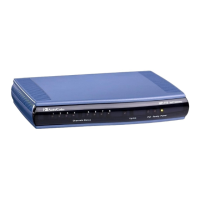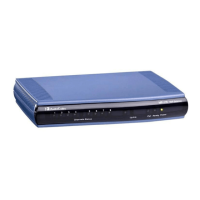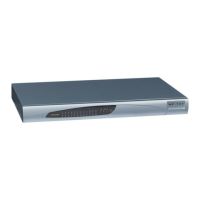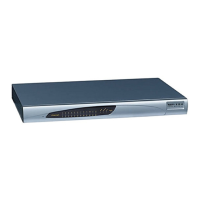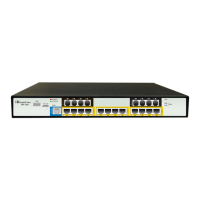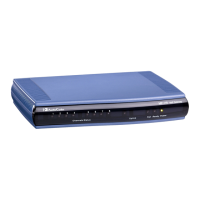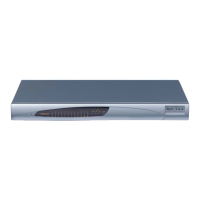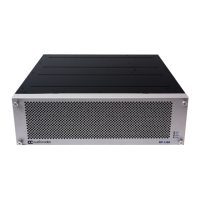Contact header of outgoing SIP messages. If a Hunt Group number /
name is not associated with the call, the 'tgrp' parameter isn't
included. If a 'tgrp' value is specified in incoming messages, it is
ignored.
[2] Send and Receive = The functionality of outgoing SIP messages
is identical to the functionality described for option [1]. In addition, for
incoming SIP INVITEs, if the Request-URI includes a 'tgrp'
parameter, the device routes the call according to that value (if
possible). The Contact header in the outgoing SIP INVITE (Tel-to-IP
call) contains "tgrp=<source trunk group ID>;trunk-context=<gateway
IP address>”. The <source trunk group ID> is the Hunt Group ID
where incoming calls from Tel is received. For IP-Tel calls, the SIP
200 OK device's response contains “tgrp=<destination trunk group
ID>;trunk-context=<gateway IP address>”. The <destination trunk
group ID> is the Hunt Group ID used for outgoing Tel calls. The
<gateway IP address> in “trunk-context” can be configured using the
SIPGatewayName parameter.
Note: IP-to-Tel configuration (using the PSTNPrefix parameter)
overrides the 'tgrp' parameter in incoming INVITE messages.
Web/EMS: TGRP Routing
Precedence
[TGRProutingPrecedenc
e]
Determines the precedence method for routing IP-to-Tel calls -
according to the IP to Hunt Group Routing Table or according to the SIP
'tgrp' parameter.
[0] = (Default) IP-to-Tel routing is determined by the IP to Hunt
Group Routing Table (PSTNPrefix parameter). If a matching rule is
not found in this table, the device uses the Hunt Group parameters
for routing the call.
[1] = The device first places precedence on the 'tgrp' parameter for
IP-to-Tel routing. If the received INVITE Request-URI does not
contain the 'tgrp' parameter or if the Hunt Group number is not
defined, then the IP to Hunt Group Routing Table is used for routing
the call.
Below is an example of an INVITE Request-URI with the 'tgrp'
parameter, indicating that the IP call should be routed to Hunt Group 7:
INVITE sip:200;tgrp=7;trunk-
context=example.com@10.33.2.68;user=phone SIP/2.0
Notes:
For enabling routing based on the 'tgrp' parameter, the UseSIPTgrp
parameter must be set to 2.
For IP-to-Tel routing based on the 'dtg' parameter (instead of the
'tgrp' parameter), use the parameter UseBroadsoftDTG.
[UseBroadsoftDTG]
Determines whether the device uses the 'dtg' parameter for routing IP-
to-Tel calls to a specific Hunt Group.
[0] Disable (default)
[1] Enable
When this parameter is enabled, if the Request-URI in the received SIP
INVITE includes the 'dtg' parameter, the device routes the call to the
Hunt Group according to its value. This parameter is used instead of the
'tgrp/trunk-context' parameters. The 'dtg' parameter appears in the
INVITE Request-URI (and in the To header).
For example, the received SIP message below routes the call to Hunt
Group ID 56:
INVITE sip:123456@192.168.1.2;dtg=56;user=phone SIP/2.0
